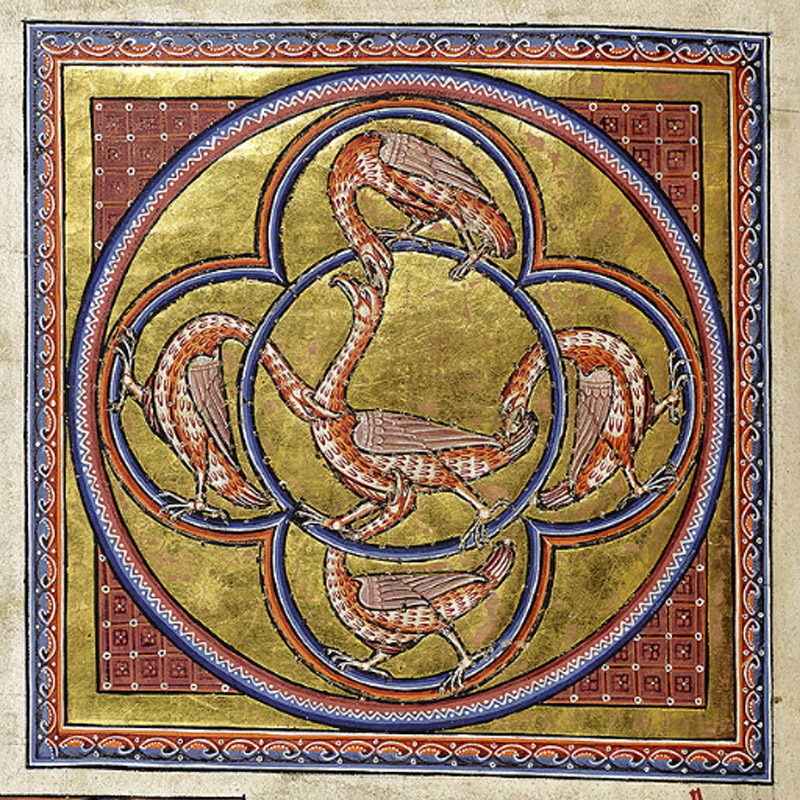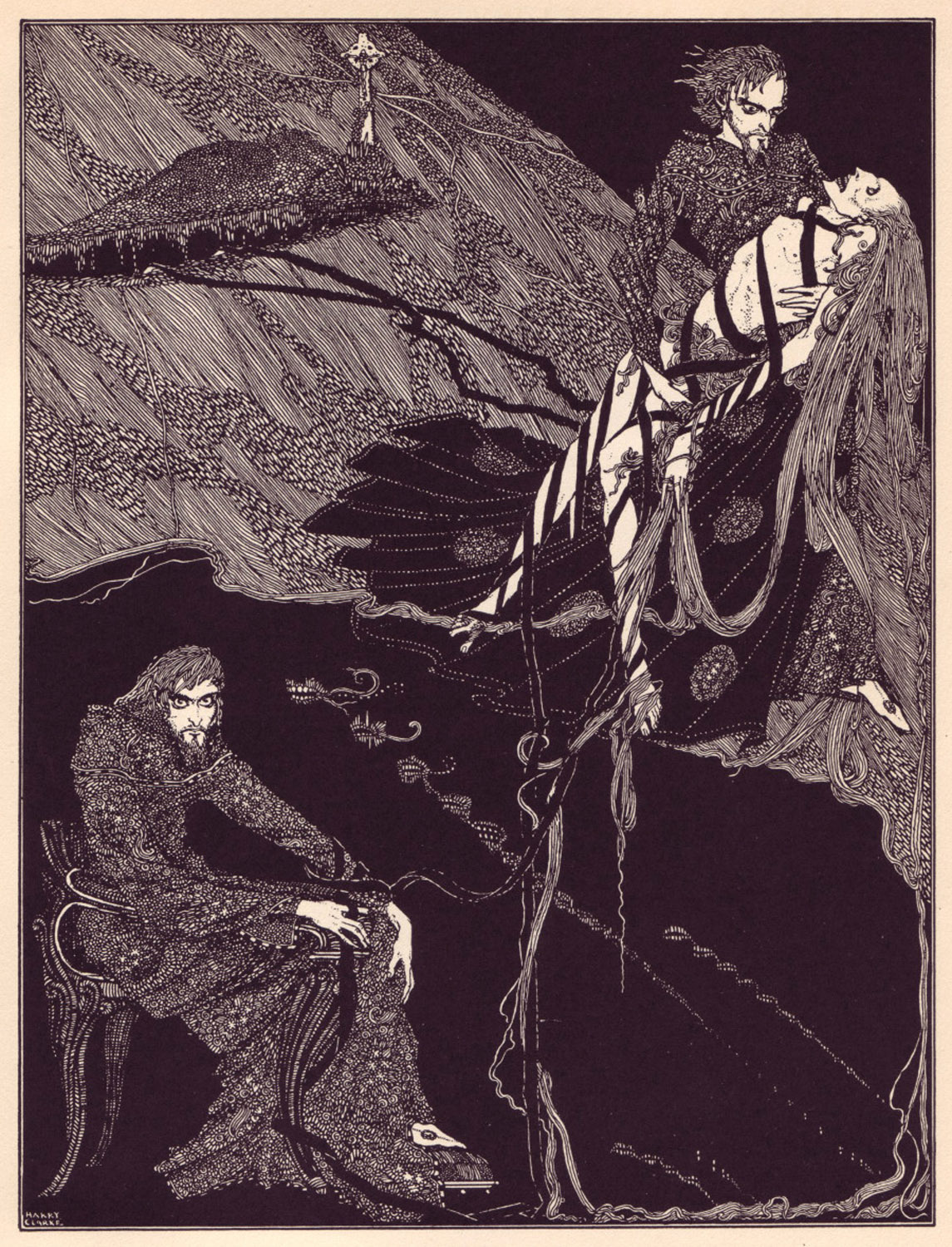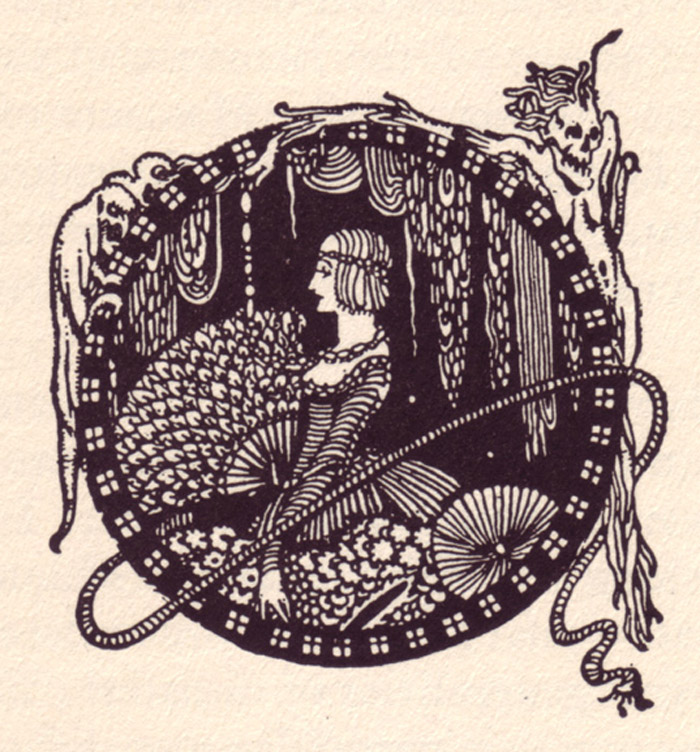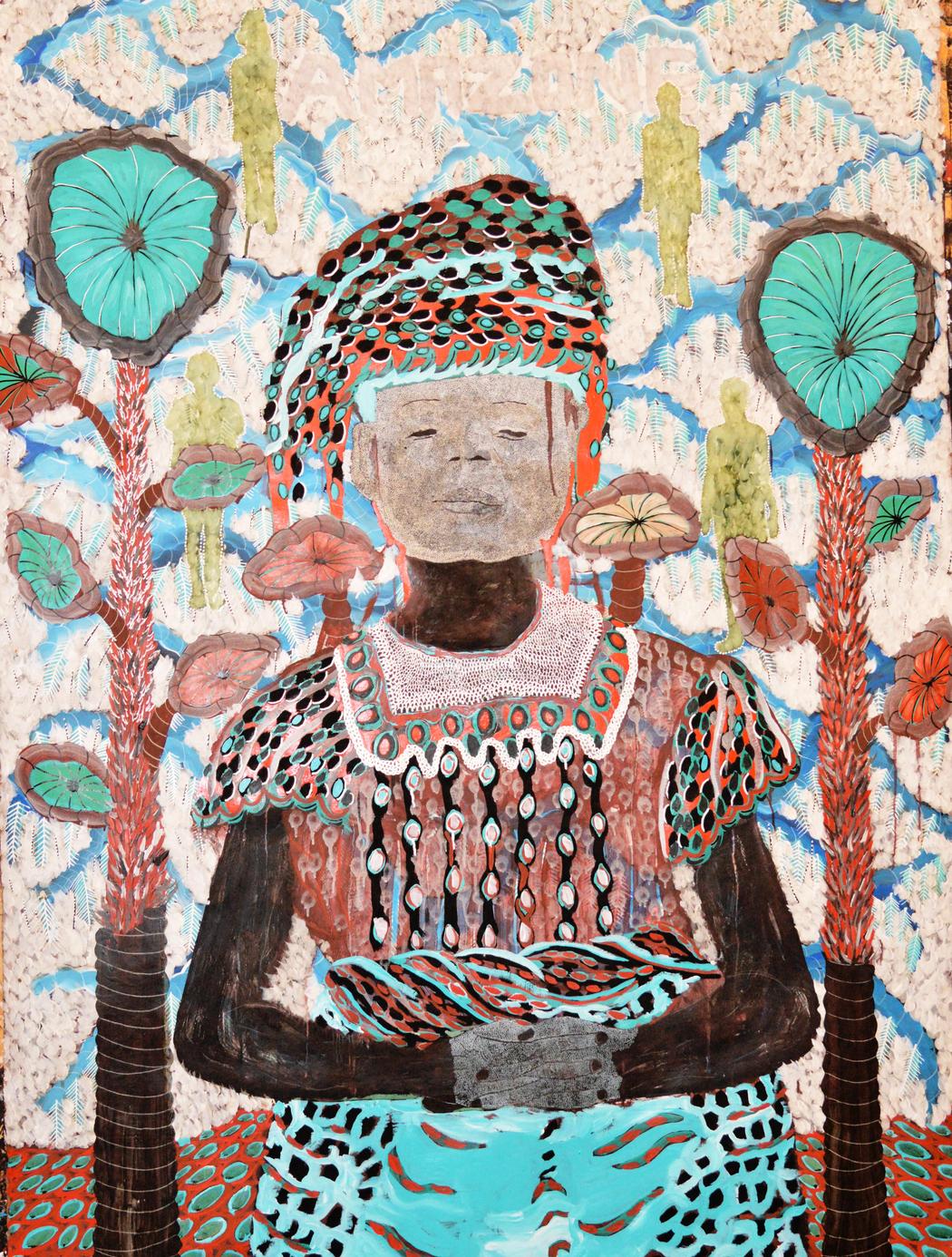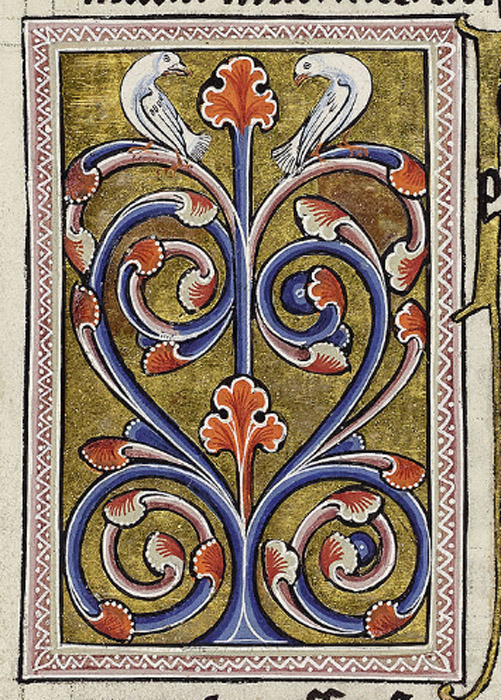Text Translation:
Of the raven The raven gets its name, corvus or corax, from the sound it makes in its throat, because it utters a croak. It is said that when its young have been hatched, this bird does not feed them fully until it sees that they have black feathers similar to its own. But after it has seen that they are of dark plumage, and has recognised them as of its own species, it feeds them more generously. When this bird feeds off corpses, it goes for the eyes first. In the Scriptures, the raven is perceived in a variety of ways; it is sometimes taken to mean a preacher, sometimes a sinner, sometimes the Devil.
In his book of Etymologies, Isidore says that the raven picks out the eyes in corpses first, as the Devil destroys the capacity for judgement in carnal men, and proceeds to extract the brain through the eye. The raven extracts the brain through the eye, as the Devil, when it has destroyed our capacity for judgement, destroys our mental faculties.



